For the past twenty years, the Estuary Program has been monitoring eelgrass in Morro Bay. After the bay experienced a sharp decline in eelgrass around 2010, we began efforts to restore eelgrass. Over the last five years, we began to see an eelgrass resurgence. If you’ve visited the bay recently, the increase in eelgrass recovery is readily apparent. We are excited to answer one of the most frequently asked questions at the Estuary Program: How is eelgrass doing?
Eelgrass recovered to pre-decline levels
In 2007, our maps indicated 344 acres of eelgrass in the intertidal zone throughout the bay. From 2007 to 2015, eelgrass in Morro Bay declined by more than 90% to only 13 acres. Since that time, given natural establishment and restoration efforts, eelgrass has returned to pre-decline levels with 500 acres mapped in December 2021. We are encouraged to see such a large expansion in eelgrass coverage throughout the bay in a relatively short time.
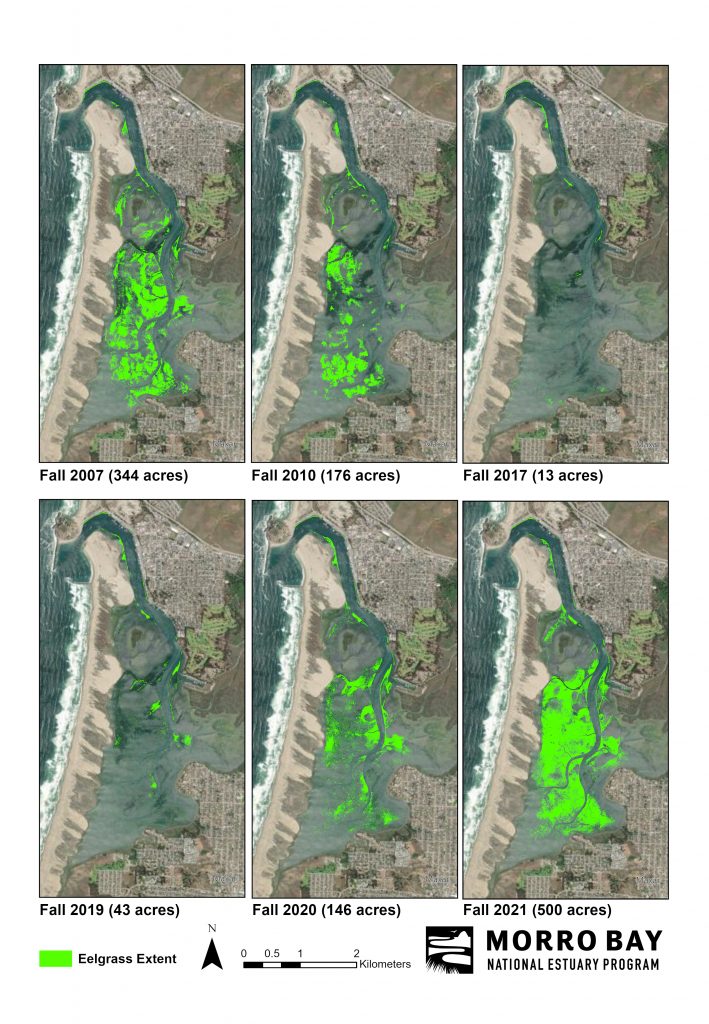
Why eelgrass is important
Eelgrass serves many important functions in our bay. It provides habitat for many species, including shelter for juvenile fish and invertebrates, and foraging habitat for shorebirds.
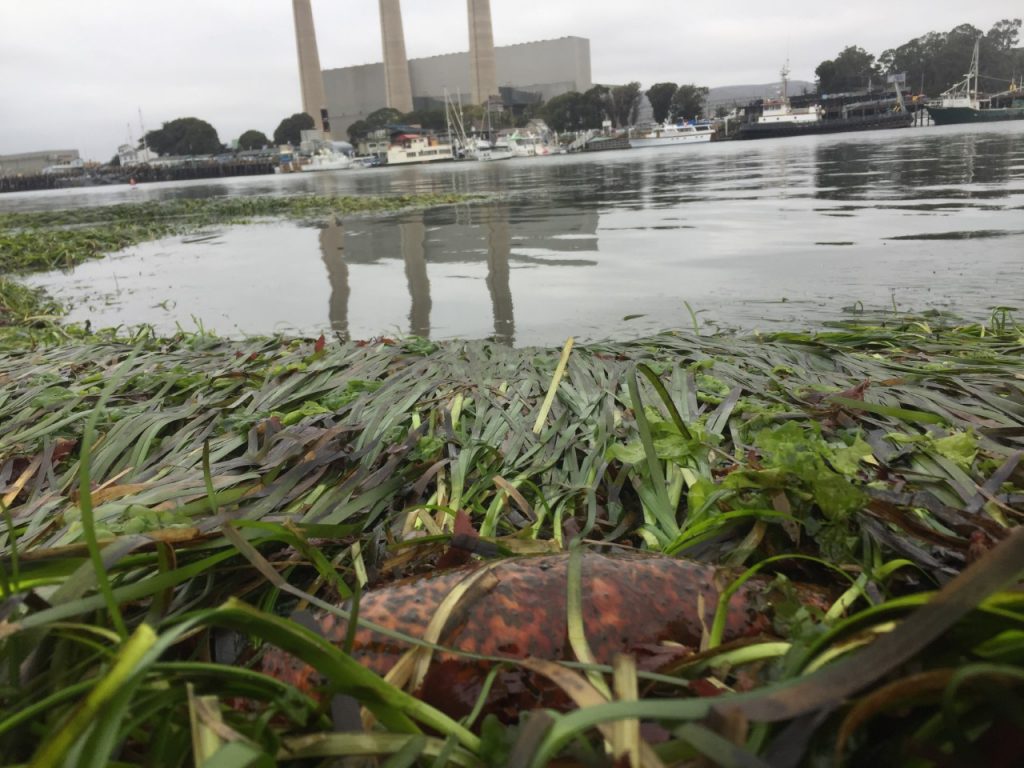
Eelgrass also aids in estuary resilience and climate mitigation efforts. Eelgrass improves water quality by filtering out excess nutrients, increasing oxygen levels, and stabilizing sediment to help keep the water clear. The stabilization of sediment also helps mitigate coastal flooding and the impacts of accelerating sea level rise.
A closer look at eelgrass recovery
During the recent decline, most of the eelgrass loss was in the mid and back bay towards Los Osos. We began noticing the return of small eelgrass patches in the mid-bay in 2016 and 2017. Those areas have continued to expand over time. Eelgrass also grew in a few new areas where it wasn’t present during the previous peak in 2007.
To aid the natural expansion of eelgrass through seed dispersal and root expansion, the Estuary Program worked with project partners and funders to support eelgrass restoration over the last five years, with nearly 15,000 plants harvested from areas with healthy beds and transplanted in areas with eelgrass loss.
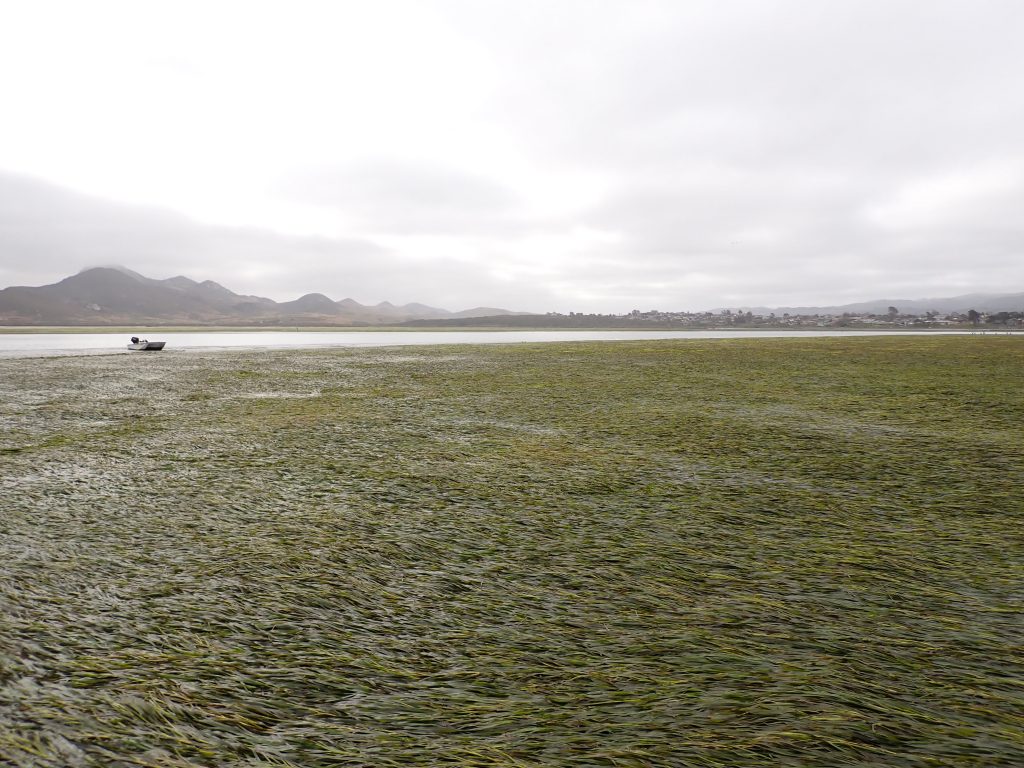
While the reasons for the recent decline are not fully understood, there are likely multiple factors such as changing water quality and elevation that play a role in eelgrass survival. Upcoming blog posts will share more about restoration efforts and monitoring of bay conditions that impact eelgrass abundance.
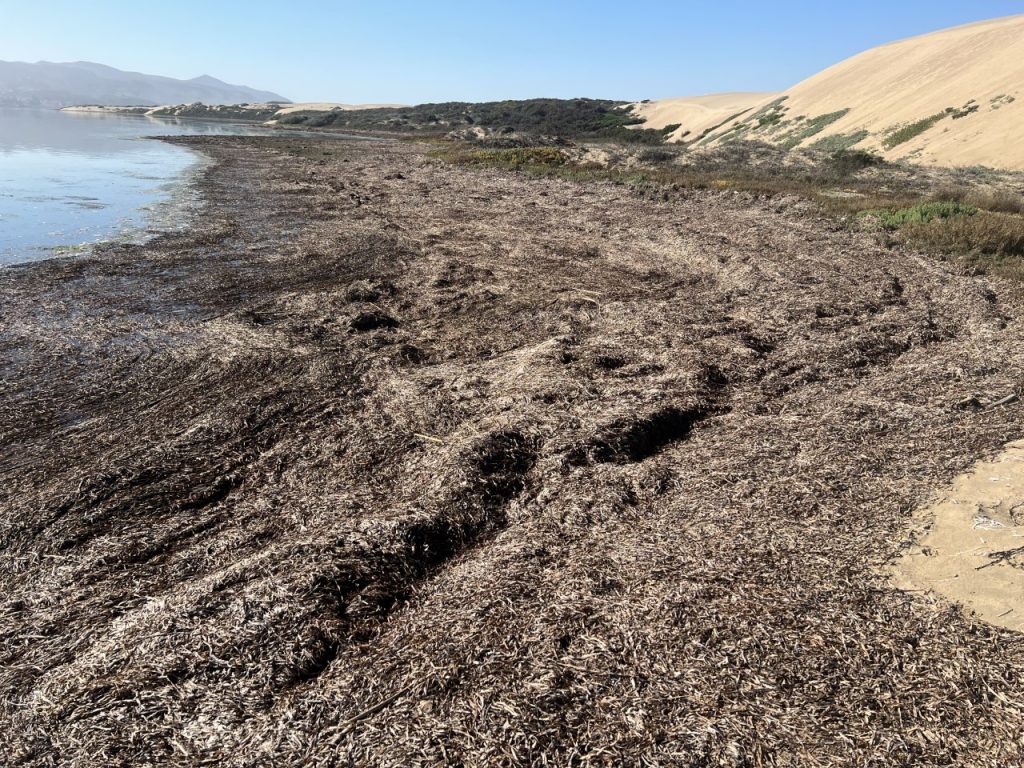
Eelgrass Mapping
The Estuary Program has been mapping eelgrass habitat for two decades. Multiple methods have been used, such as aerial flights, sonar, and drones, with total acres fluctuating over time given changing estuary conditions, time of year, and method of mapping. In 2021, we partnered with Cal Poly to create a baywide map of intertidal eelgrass. Cal Poly flew a drone to collect thousands of images of the bay. Next, eelgrass habitat was digitized to calculate the total acres. On–the–ground field checks were also completed to confirm what was in the drone images.
To learn more about how the eelgrass coverage is calculated using high-resolution images of the bay, check out our Field Updates blog from November 2021: Eelgrass Monitoring Behind the Scenes blog.
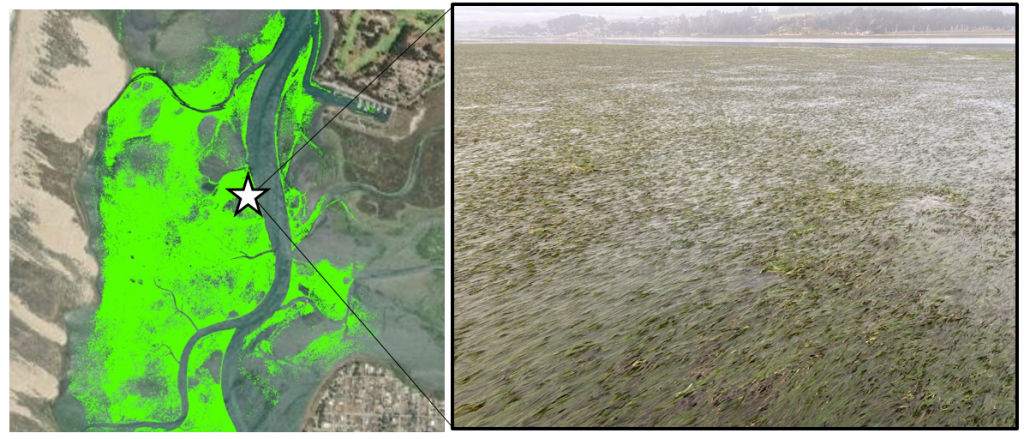
Rise in Macroalgae
Along with the increase in eelgrass throughout the bay, we have also seen a rise in macroalgae. Macroalgae is what most people call seaweed. The term refers to large (macro) algae that can be seen with the naked eye including green, red, and brown algae. Algae such as ulva (or sea lettuce) is abundant in the bay. It is a primary producer and can have benefits to the ecosystem. However, in large amounts, macroalgae can compete with eelgrass for light, which they both need to grow. In some isolated areas of the bay, we have seen macroalgae outcompete eelgrass, with eelgrass beds reducing in size or density. This is something that we will continue to monitor along with eelgrass growth in the bay.
What’s next?
As we have seen in the past, eelgrass habitat is dynamic and changes over time. The Estuary Program will continue robust monitoring and mapping efforts with partners to track eelgrass habitat and understand conditions of the bay that could affect habitat conditions.
You can learn more about eelgrass restoration and the factors that affect eelgrass health. We will continue to report on eelgrass health and monitoring efforts in the future!
Thank you
We are grateful for the many partners who joined us in eelgrass monitoring, research, and restoration efforts. The work would not have been possible without the support of numerous Estuary Program partners, including Tenera Environmental, Inc., Cal Poly, and Cuesta College, CDFW, among others. Funding for the 2021 mapping effort was provided by the USFWS Coastal Program and the United States Environmental Protection Agency under cooperative agreement 83967501 to Restore America’s Estuaries.
Help us protect and restore the Morro Bay estuary!
- Donate to the Estuary Program today and support our work in the field, the lab, and beyond. The Estuary Program is a 501(c)3 nonprofit. We depend on funding from grants and generous donors to continue our work.
- Support us by purchasing estuary-themed gear from ESTERO. This locally owned and operated company donates 20% of proceeds from its Estuary clothing line and 100% of Estuary decal proceeds to the Estuary Program. Thank you, ESTERO!
- Purchase items from the the Estuary Program’s store on Zazzle. Zazzle prints and ships your items, and the Estuary Program receives 10% of the proceeds.
Thank you for helping our beautiful, bountiful, biodiverse bay!